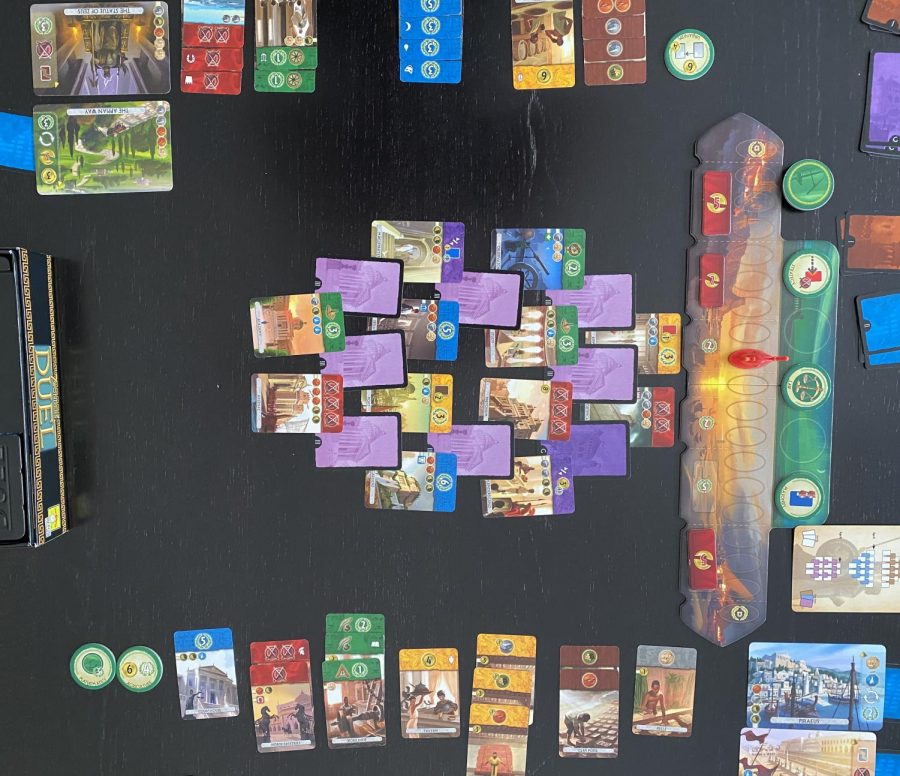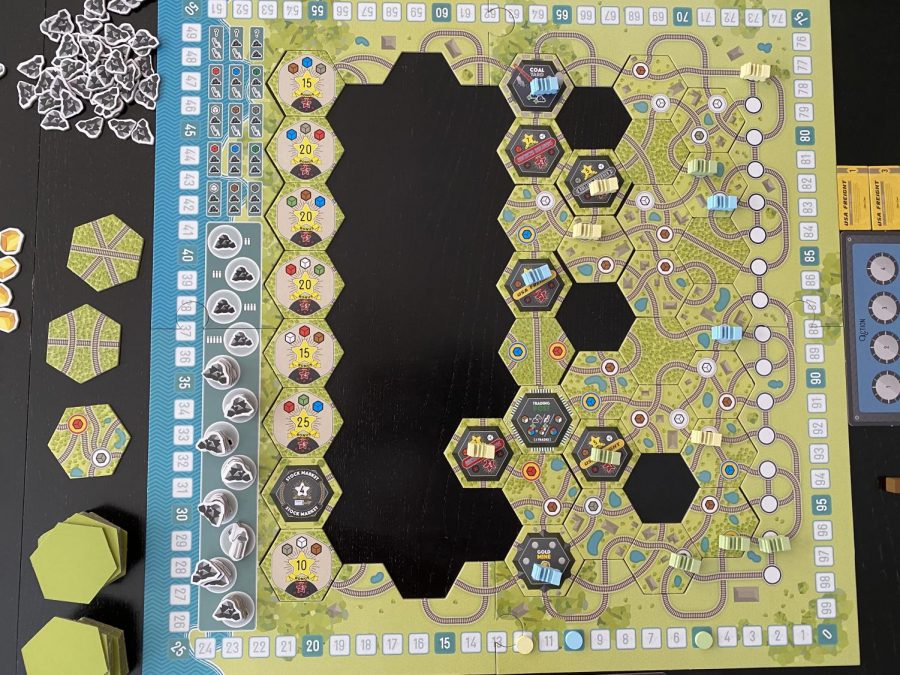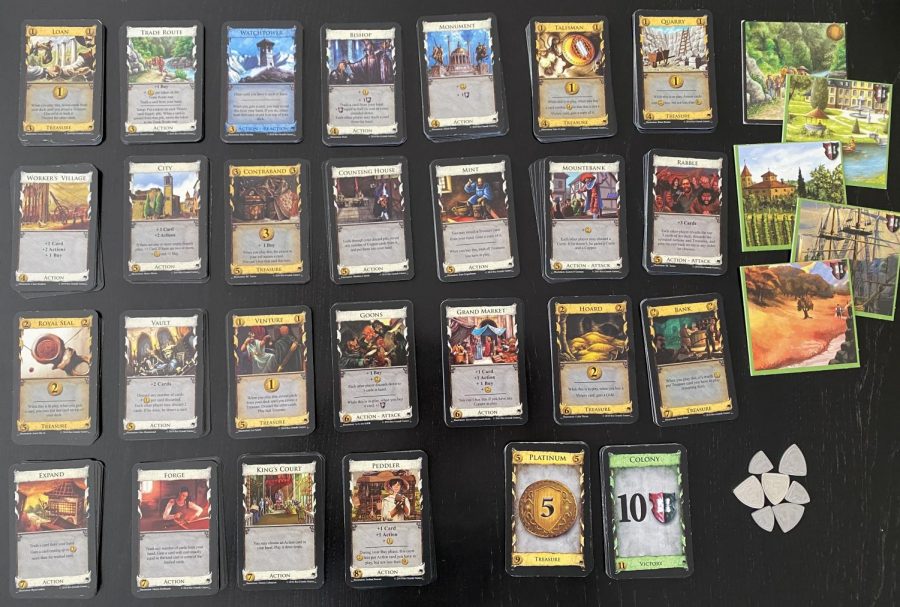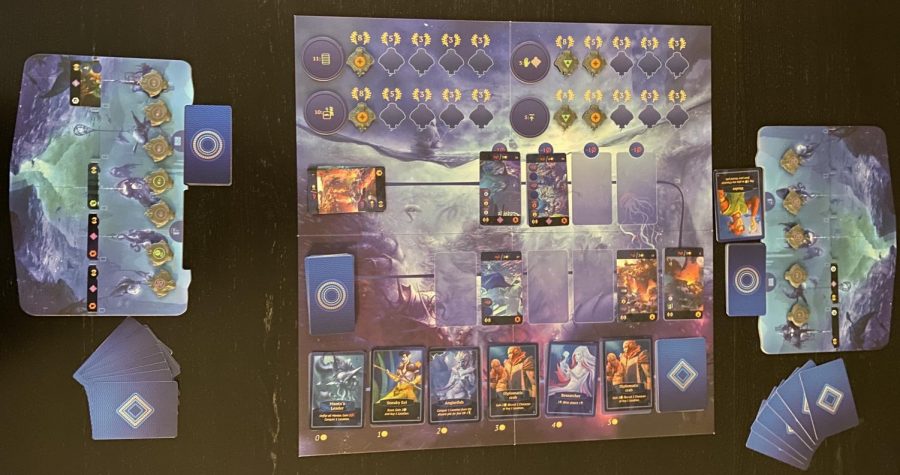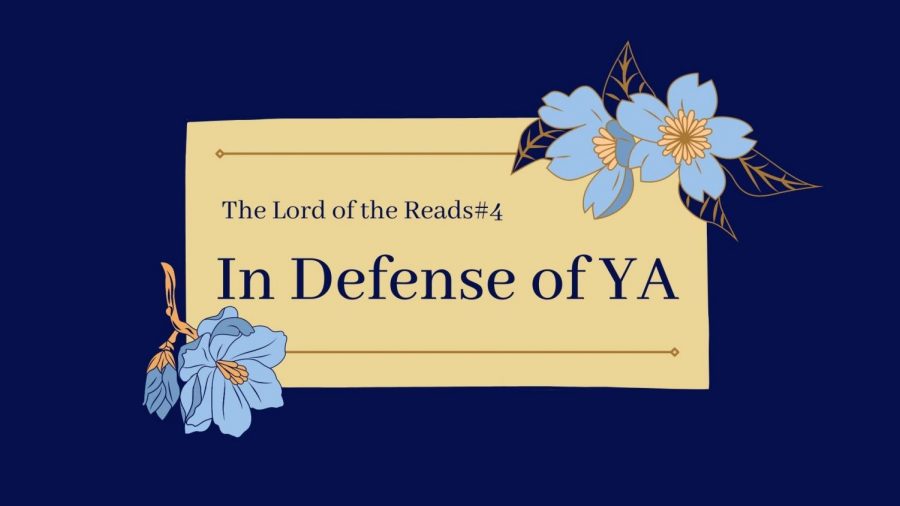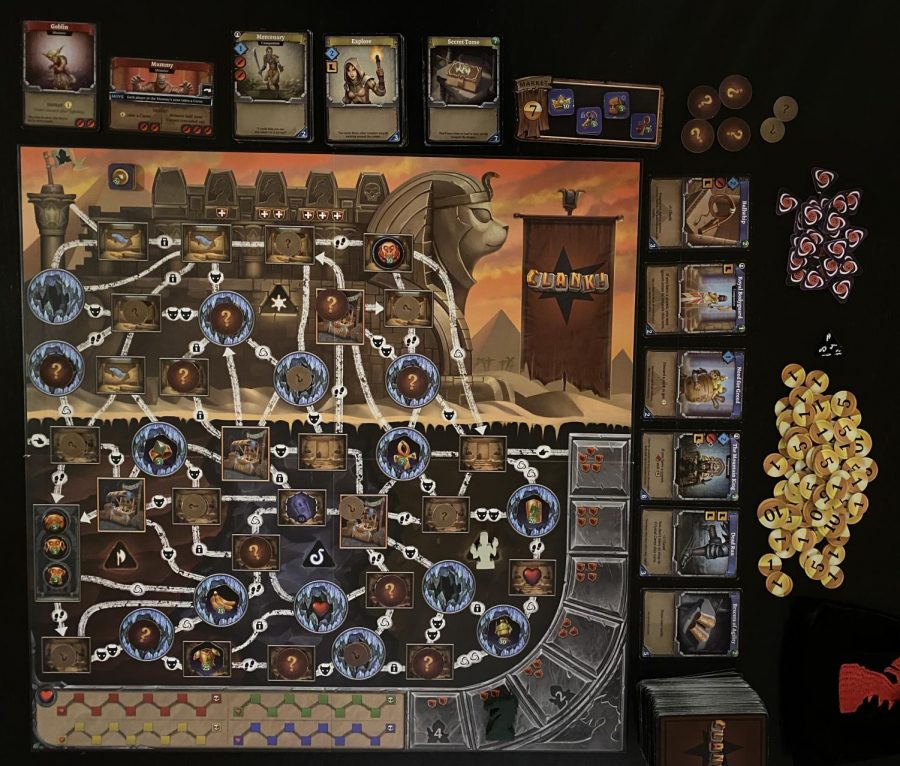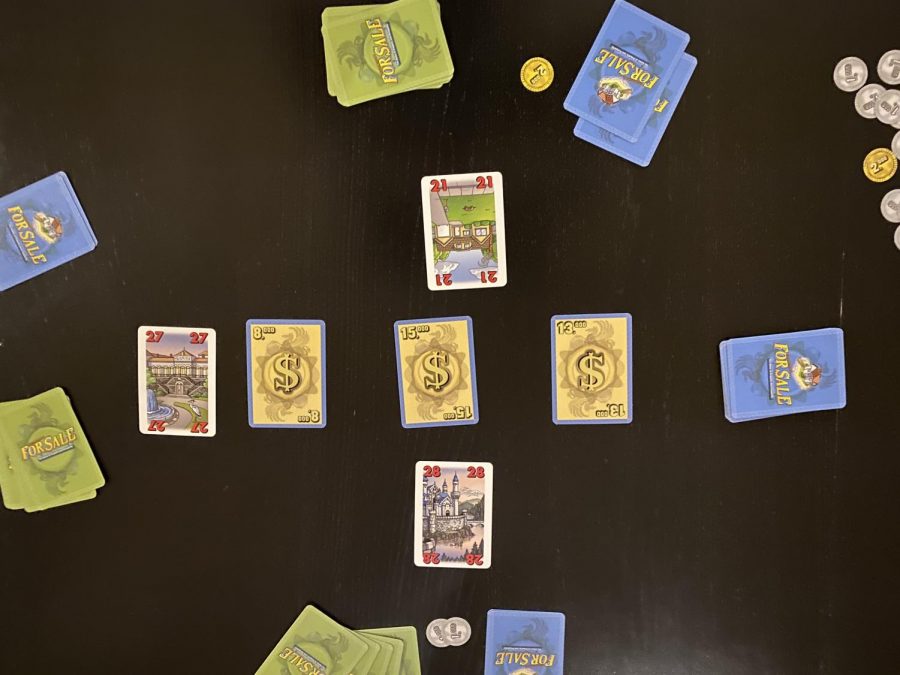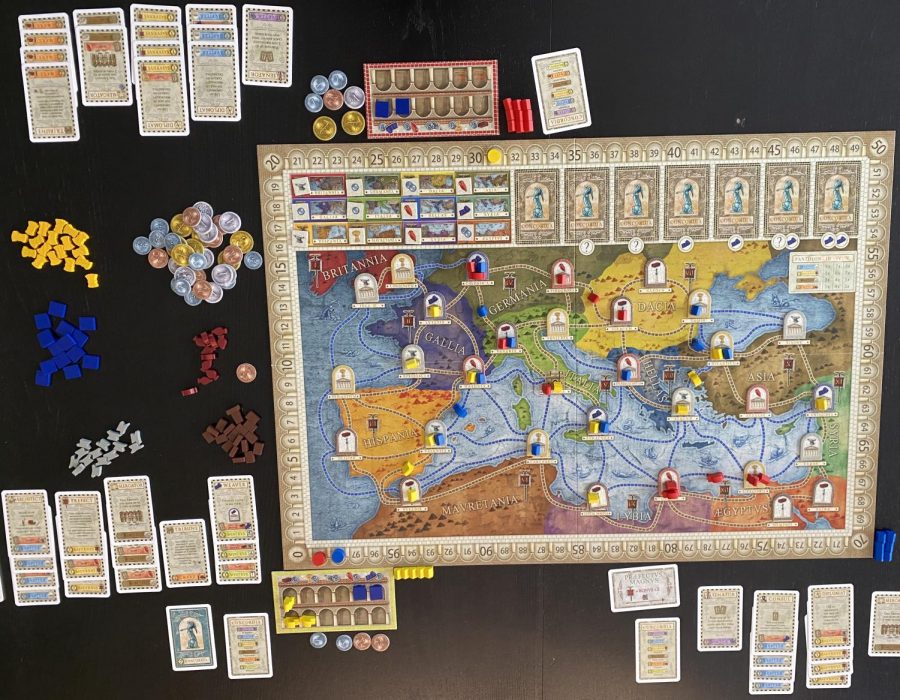7 Wonders is an extremely popular game, but this week, we are looking at a 2-player version of the game, 7 Wonders Duel. To be clear, 7 Wonders does have a 2-player variant, but the game was never made for two. 7 Wonders Duel is made only for two players. While it has a similar theme and artwork to 7 Wonders, the way you play is quite different. I’ll briefly explain how you play and then get to my final thoughts. If you are already familiar with 7 Wonders, many of these rules will also seem familiar, but there are some significant differences.
How to Play
The first major difference is that there are three ways to win the game. If you get six different science symbols, from green cards, you immediately win the game. You also immediately win the game if you get the military counter all the way to your opponent’s side of the military track. If none of those happen by the end of three ages, you will count up points to determine the winner.
Before the first age, each player is going to get four wonder cards. The game has a recommended distribution for your first plays, but you can also draft them, taking turns to pick one or two wonders. Each player will also get seven coins.
At the start of each age, the cards will be in a formation, such as a pyramid, where some cards are partially covered by one to two other cards. Some of the cards are face up and others are face down.
On your turn, you will pick a card that is not covered by any other cards. Then you must either construct that card, use the card to construct one of your wonders, or discard the card for coins. To construct the card, you will need to pay its cost shown in the upper left of the artwork. Some cards are free, both others may require resources or gold to construct.
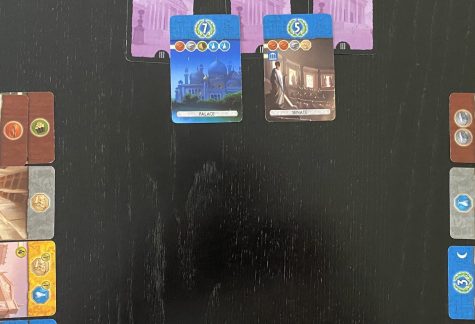
When you construct a card, it is best to organize the cards based on their color. All brown and gray cards produce resources. When constructing a card that requires resources, check which resources you have on your brown and gray cards. If you are missing resources, you can purchase them with coins. The cost for each resource you buy is two coins plus one additional coin per resource of that type your opponent has on one of their brown or gray cards. You keep all of your resource cards when you construct a building.
There are many other types of cards that will help you score points or win through another method. Blue cards provide victory points shown on the top part of the card. These points are useless if someone wins before the end of age three. There are also yellow cards that impact your resources. Some of them give you coins when you construct them and others will lower the price to buy resources or give you coins for each card you have of a certain color.
Green cards are science cards. Each science card has a symbol and some cards also give a few victory points. As soon as you get six different symbols, you win. Additionally, when you get a pair of identical symbols, you can take a progress token from the board. There are five face up tokens on the board each game. Progress tokens will grant you an ability either immediately or for the rest of the game.
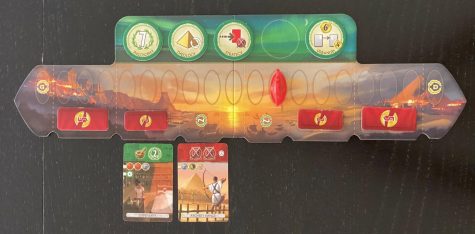
Red cards will boost your military. For each symbol on the card, move the conflict token one space toward your opponent’s side of the board. If you are able to move this token far enough, your opponent will lose coins. You automatically win the game if you get it to the end of the track.
Sometimes, you don’t want to construct the card you picked. If you want to build one of your wonders, slide the card you picked under the wonder. The cost to build the wonder is shown on the left of the card. The reward for building this wonder is on the right. In addition to points, coins, and other benefits, one unique benefit you can only get when you build certain wonders is an extra turn. When the first player builds all four of their wonders, the other player is now limited to building only three of theirs because only seven wonders can be built throughout the game.
When you in need of money, you can discard a card, instead of constructing it or a wonder, to get coins. You get two coins plus one coin per yellow card you have.
After you take an action with a card, any cards that are no longer covered are now available. If the card was face-down, it is now turned face-up. Players will continue taking turns through three ages until either someone wins through science or military, or the last age ends. In that last situation, you’ll add up the points to see who is the winner.
Final Thoughts
And there you have it: a 2-player version of 7 Wonders. This is an excellent 2-player game because there’s enough complexity to make it strategic, but it’s still simple enough to still have fun with.
I also like that there are 12 wonders in the game, but only eight are used each time. Drafting the wonders gives both players something different to do, so there’s a bit of an asymmetrical start. Another crucial part of the game is picking the cards, which is a brilliant and unique design. Each time you pick a card, you have to consider what cards are going to show up because of that. And if someone gets close to the science or military victory, you have to be even more careful that you don’t accidentally flip over a card that lets them win.

On the same note, the wonders that give you the extra turn are really powerful because you can skew the timing and change who is going to get each card. On a slight downside, having some of the cards face-down adds some luck into the game. Sometimes, you can get a good or bad flip that ends up determining who wins. On the contrary, you sometimes end up with an exciting push your luck aspect where you have to decide whether to open up the random card or the one you already know.
Getting different science symbols gets you closer to victory, but there is also a purpose of getting identical symbols. The progress tokens provide you with a useful ability that also adds to the replayability. Because you can see which ones are out at the start of the game, you can also use progress tokens to your advantage. I wouldn’t say that the progress tokens are unbalanced, but some of the powers seem to be more on the extremes where they are either very useful or not useful at all. Unfortunately, that usually makes it obvious which token to take and diminishes the game experience in one of the otherwise most innovative parts of the game.
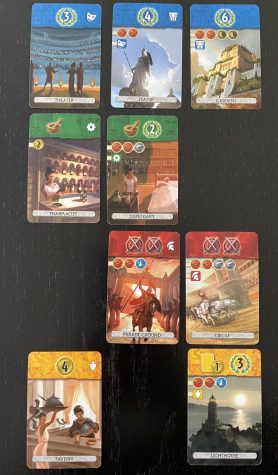
A couple of prominent parts of 7 Wonders that also are part of this game is purchasing resources you don’t have and chaining. There are some buildings that link to a building in another age, meaning if you get this building, there is another building that you can get for free later on. The chains are easy to read because you will see a matching symbol on both cards. All buildings chain to a building of the same color. The back of the rulebook provides a full list of all the cards in the game, their costs, rewards, and chains.
In 7 Wonders, you can purchase resources you don’t have by paying a player to your right or left two coins. Because that wouldn’t work with 2-players, the game has you pay the bank at a potentially higher cost. This increases many of the strategic decisions because you each resource you get increases the cost of that resource for your opponent. You can intentionally monopolize a resource that your opponent needs to make the game harder for them, but the game has a way around that too with yellow cards that allow you to buy a certain resource for a flat rate of one coin. However, most of those cards come in the first age, so you have to plan wisely from the beginning to be successful with resources. Getting all of these cards and no resources is also a valid strategy because more yellow cards increase the number of coins you get when you discard a card, and you can use all the money you get to construct other cards and wonders.
The artwork and components are nearly identical to that of 7 Wonders. If anything, the artwork in this game is better because it is easier to know which buildings link. The names of the buildings, although present for thematic ties, are not essential to play the game. There are also numerous player aids in the rulebook and on a separate page to help players understand any symbols they come across. In addition, the game has an amazing plastic insert that holds all of the game components very well, which makes setup and cleanup a breeze.
Overall, the designers, Antoine Bauza and Bruno Cathala, did a fantastic job taking the theme and concepts from 7 Wonders and reworking them for a 2-player game. If you enjoy 7 Wonders, you definitely should check this game out. But, you don’t need to know 7 Wonders to play this, so if you want a good 2-player game, I highly recommend this one. And, even if you didn’t like 7 Wonders, this game is different enough that it is worth a try. You can easily find a copy of this game for around $20-30 online and at some stores.
My favorite parts of the game are selecting cards because you have to consider your short and long-term strategy, and what cards you might open up for your opponent. I also enjoyed having a variety of wonders and progress tokens because they make each game different from the last. The extra turn ability on the wonders is also very interesting. My only negative critique is that the luck of turning over a card can sometimes be too much luck, and some of the progress tokens are too situational.
I like this game better than 7 Wonders because you have more control and more direct interaction with your opponent. It is my most played 2-player game because it is strategic and quick, with most games lasting no more than 30 minutes. Due to these reasons, 7 Wonders Duel gets a rare rating at 9.5 out of 10.

